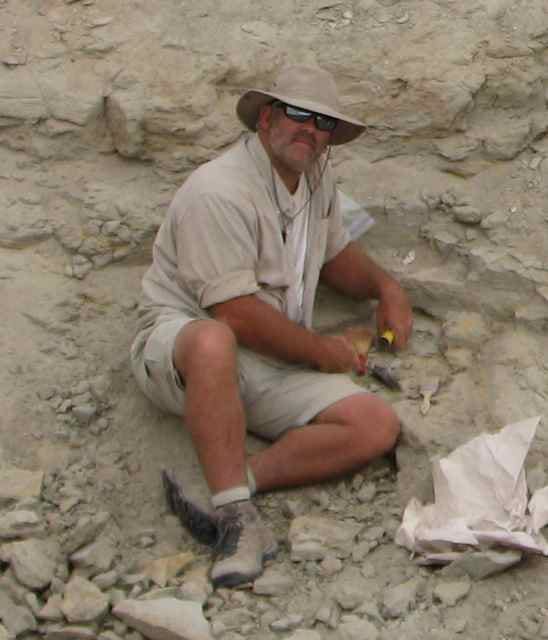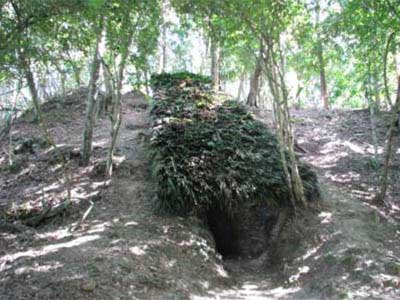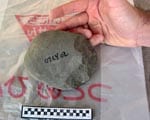Dallas Morning News reporter Marc Ramirez has written about the big prehistoric crocodile identified by SMU paleontologist Thomas L. Adams, a doctoral candidate in Dedman College’s Roy M. Huffington Department of Earth Sciences.
The story, “‘Prehistoric crocodile thought to have originated in Europe may be a native Texan,” published in the Tuesday, July 20 edition of the Dallas Morning News.
Making its first appearance in Texas, the genus known as Terminonaris was thought to have originated in Europe, but Adams’ research indicates it now appears to have been a native of the Lone Star State.
The switch in origins for Terminonaris is based on the identification of a well-preserved, narrow fossil snout that was discovered along the shoreline of Lake Lewisville near Dallas.
The 96-million-year-old fossil from Texas is the oldest prehistoric crocodile of its kind in the world, says Adams. A distant cousin of modern crocodiles and alligators, Terminonaris was similar to the modern-day Indian gharial, only much larger.
Full story available to Dallas Morning News subscribers.
EXCERPT:
By MARC RAMIREZ
Dallas Morning News
Thanks to a mail carrier’s discovery, it now appears the Beast from the East was actually a Guest from the West.About five years ago, Brian Condon got tired of being cooped up at his Lakewood Village home and figured he’d go out and find a fossil.
What he found that day at Lewisville Lake would ultimately brand a supposedly European-based prehistoric crocodile as a native Texan instead.
Meet Terminonaris — a 25-foot-long reptile predating the Lone Star State by about 96 million years.
SMU paleontologist Thomas Adams was among the team that identified the creature. The team’s findings were published in May???s issue of the Journal of Vertebrate Paleontology.
The animal is a cousin to today’s crocodiles and alligators, the largest of which is the saltwater crocodile, which can reach 20 feet in length.
Previously, most of the few known Terminonaris specimens were from North America. The oldest known, however, was linked to a single 94 million-year-old jawbone found in Germany, leading scientists to surmise that the animal had originated in Europe and found its way westward.
That theory has probably been upended, with the Texan croc apparently outdating its German counterpart by about 2 million years.
“We have to really rethink: Did this group really originate in Europe and disperse west?” said Adams, who now has the fossilized snout stored in his office. “Or is it more likely that it originated in Texas?”
The discovery of a local Terminonaris now indicates the animals originated in what is now the southern U.S., then spread north along the shallow Western Interior Seaway, which stretched from what is now the Gulf of Mexico to Canada.
Condon, the amateur collector, was used to finding ammonites and shark teeth near the end of the peninsula dividing the two northern forks of Lewisville Lake. Ten years earlier, he’d found most of a plesiosaur.
 Dallas Morning News reporter Marc Ramirez has written about the big prehistoric crocodile identified by SMU paleontologist
Dallas Morning News reporter Marc Ramirez has written about the big prehistoric crocodile identified by SMU paleontologist 





